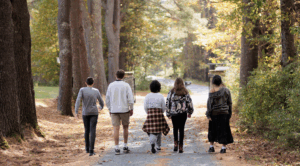In the October 15th edition of the New York Times Magazine, where the epidemic of severe anxiety disorders and how schools, parents and teens struggle to get the right kind of help, the work at Mountain Valley Treatment Center was featured. The article highlighted the gold standard of treatment, the empirically supported Cognitive Behavioral Therapy (CBT) or, more specifically, the modality of Exposure and Response Prevention (ERP) or “exposure therapy.”
At Mountain Valley we regularly hear from our parents how long it took them to find the right kind of help – all while their son or daughter’s anxiety, obsessions and compulsions became more entrenched and the family became more stressed and challenged. Finding a qualified, experienced, and properly trained clinician is not easy in some locales. The good news is once a family finds the right kind of help, treatment is time limited and is incredibly effective. Because exposure therapy is difficult for clients to embrace (who wants to confront those things that cause us worry and fear?), and the homework an outpatient clinician may give the family is challenging to consistently do, kids can get “stuck” and avoidance to school and outside the home activities can increase, and the home environment can become “stress machine.” This is when a higher level of care may be warranted.
When a family member’s world has become incredibly small due to their worries, fears and thoughts, stress and strain can permeate the entire family system. For adolescents and emerging adults who should be in school – but can’t get to school or, if they do, can’t stay there long – life can be challenging. Parents need to get to work and other children may need to get to activities or school. Life must go on.
Many families have been able to adjust somewhat to the turmoil and strain by making accommodations for their child who is suffering. This is understandable and common. This “family accommodation” or “maintenance” of the anxiety or obsessive-compulsive behaviors does not lead to long-term symptom reduction and will ultimately increase and entrench the behaviors. Allowing a child to stay home from school, meeting a child in the school parking lot at lunch time because their social anxiety is such that they cannot go into the lunch room, or waking a child up early to complete their rituals before school so they won’t be late, are just a few examples with which many Mountain Valley parents have struggled with before finding treatment.
When looking for a comprehensive treatment program, it is important to note what type of family therapy and psycho-education is provided. Yes, kids suffering from OCD and severe anxiety need help, but families also need time to heal and lots of support. Time-limited treatment means that the family will be together sooner rather than later. The system needs to evolve so negative patterns do not pop up and everything is back to square one. The best support a family can get before, during and after their child’s treatment, is education. Getting past the place of trying to figure out where it all came from simply wastes time. Finding a good therapist and doing the homework will support positive outcomes.
Don Vardell, Executive Director


